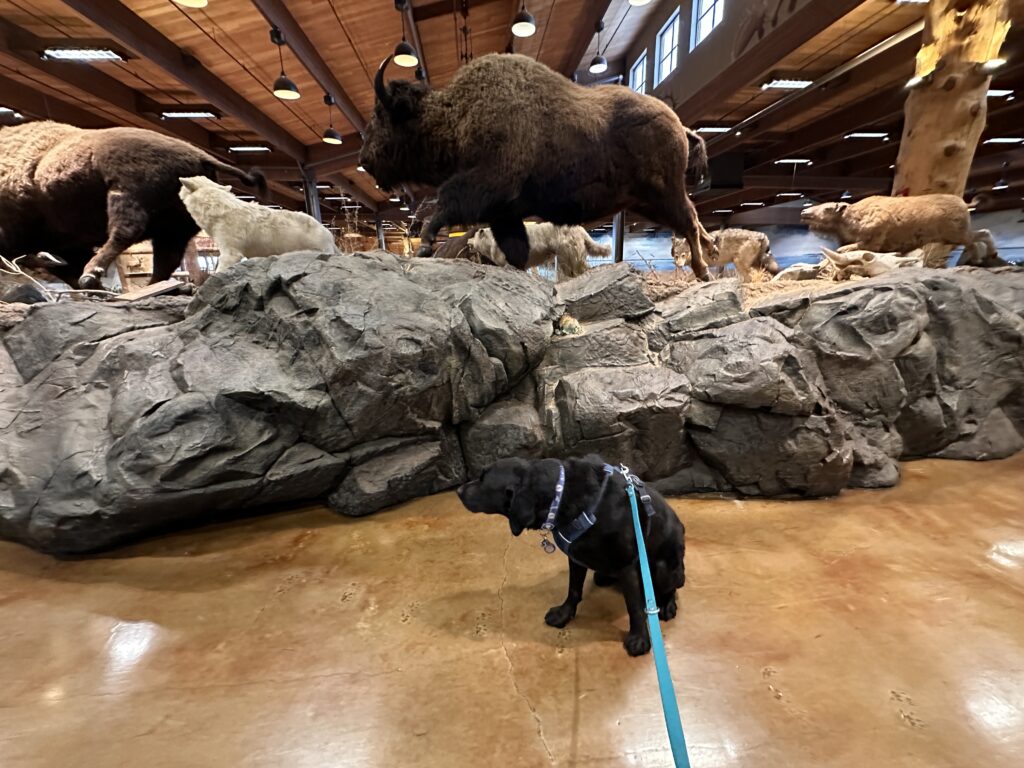How to Tell the Difference Between Temperament and Trainable Behaviors
One of the hardest, but most important questions you can ask yourself is: “Is my dog really a good fit for service dog work?”
The truth is, not every dog is suited for the demands of public access and task training. And that’s okay: most dogs are not!
It doesn’t mean your dog isn’t wonderful, it just means service work may not be the best role for them.
The good news? Many common problem behaviors are trainable. The key is knowing the difference between temperament issues (which typically can only be managed/modified) and training issues (which can).
Temperament Issues (Not a Good Fit for Service Work)
If your dog struggles with any of the following, service work may not be appropriate:
- Unwanted behaviors caused by pain or underlying medical issues. Experts, including myself, say a dog in pain would be unethical to make your dog work. Service Dog work is physically demanding – ESPECIALLY for mobility dog work – and if your dog is unhealthy: you want to really determine if this role is the right fit for your dog.
- Aggression or biting toward people or other animals – unsafe & a quick way to get yourself in a lawsuit – where your dog could be, worst case, court ordered for behavioral euthanasia.
- Excessive anxiety or extreme prey drive that doesn’t improve with training
- Genetic temperament traits that make them unsuitable for service dog work
These aren’t things you can “train out.” They’re deeply rooted in your dog’s health, genetics, or emotional makeup.
Grey Area: May Not Be a Good Fit
Some dogs fall into a middle category where success depends on the severity and how they respond to training:
- Excessive whining when triggered
- Nervousness being handled by strangers (without aggression)
- Chasing squirrels or being easily distracted, but still food-motivated
- Behavioral regression after a traumatic event
These dogs may or may not succeed in public access. Sometimes, with careful training and the right support, they can make progress. But it’s important to be realistic with yourself and know that it could end up being a deal breaker.
Trainable Behaviors (Not Dealbreakers!)
On the other hand, many everyday “problem behaviors” look scary but are actually very trainable, such as:
- Jumping up when you come home
- Snatching food off the ground if you don’t cue “leave it” fast enough
- Rushing through doorways
- Barking when they want attention
These are the kinds of things we tackle with structured, consistent training. They don’t disqualify your dog from service work: they just mean you need a plan.
Temperament Changes as Young Dogs/puppies Mature into adults
An important and often overlooked factor is how much a dog’s personality can change as they grow from puppyhood into adolescence and adulthood.
When dogs are young, many seem like “perfect angels.” They may be playful, tolerant, and open to everything. But as they hit adolescence, genetics and maturity start to play a bigger role.
For example:
- A puppy that loves every dog may grow into an adult that shows dog reactivity due to frustration, if socialization isn’t continued.
- A calm puppy might develop anxiety as environmental stressors build up over time (especially when ‘overexposed’ or ‘over-socialized’)
- A dog who seems easy-going could “unlock” genetic traits in adulthood, such as nervousness, fear, or prey drive.
Even purpose-bred service dogs raised by well-established organizations aren’t guaranteed to graduate.
Take Dodger as an example: as a puppy, he was the model prospect. But once he matured, his anxiety was too severe for him to continue as a working service dog.

This is why it’s so important to be realistic: at any point, a dog could develop traits that make them a wash for service work. That doesn’t mean you failed — it means your dog is showing you what role they’re best suited for.
The Bottom Line
Every dog is unique. While some traits can be reshaped with training, true temperament issues usually can’t. That’s why it’s so important to take an honest look at your dog before committing to the full service dog journey.
If your dog isn’t a good fit, it doesn’t mean you’ve failed: it just means they’ll thrive better as a beloved pet or in another role.
In my opinion, I still 100% think training your dog is worth it! Worst case scenario: you end up with a dog who is better trained than before.
And if your dog is a good fit but just has some rough edges? That’s where structured training comes in. My Public Access Prep program was designed to help owner-trainers avoid common mistakes and build the focus, reliability, and task skills their dogs need to succeed.